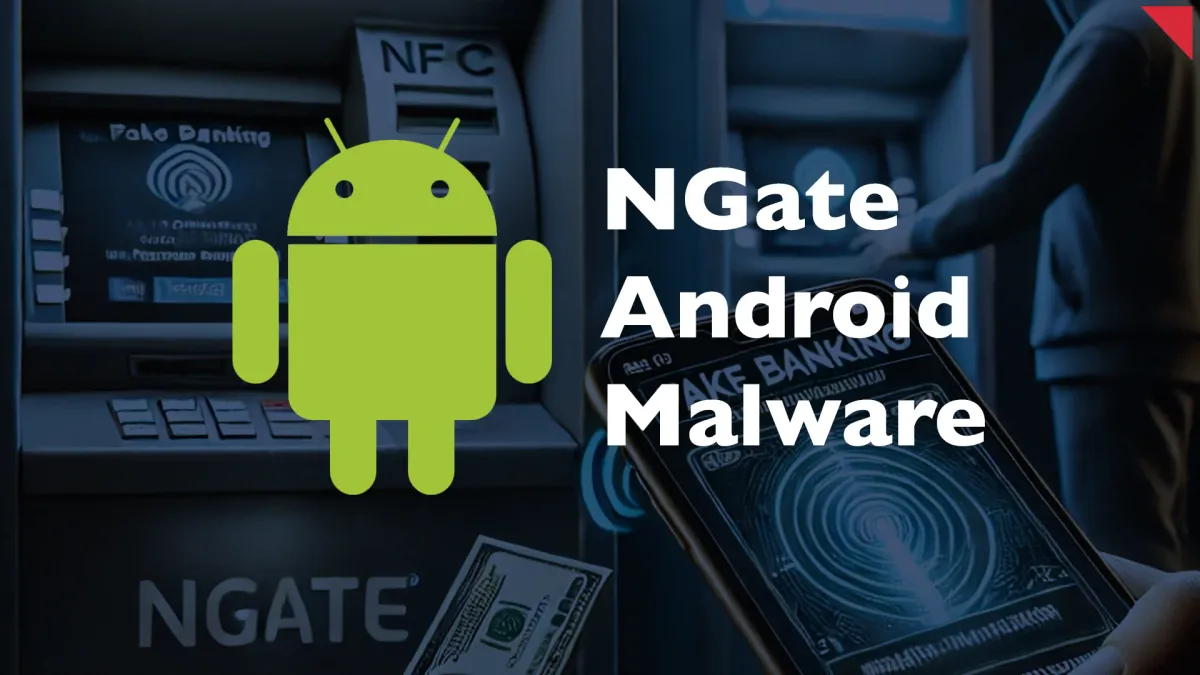ESET Uncovers NGate Android Malware Relaying NFC Traffic to Facilitate Unauthorized ATM Withdrawals
ESET Research revealed a sophisticated crimeware campaign targeting customers of three central Czech banks. The attack utilized advanced Android malware named NGate, which can relay near-field communication (NFC) data from victims' payment cards via compromised Android devices.

Introduction
On August 22, 2024, ESET Research revealed a sophisticated crimeware campaign targeting customers of three central Czech banks. The attack utilized advanced Android malware named NGate, which can relay near-field communication (NFC) data from victims' payment cards via compromised Android devices. This innovative method allowed attackers to mimic the original card and withdraw funds from ATMs without direct access to the victims' physical cards.
Report Overview
ESET researchers first observed the NGate malware in March 2024, following a series of phishing activities that had been ongoing in Czechia since November 2023. These attacks were part of a larger operation involving malicious progressive web apps (PWAs) and WebAPKs, which were used to deceive victims into downloading fake banking applications. ESET's Brand Intelligence Service identified these fraudulent apps, which ultimately led to the discovery of the NGate malware.
The NGate malware evolves from the threat actor's previous tactics, which involved using PWAs and WebAPKs to steal banking credentials. Unlike earlier methods, NGate leverages the NFCGate tool, initially developed by students at the Technical University of Darmstadt, Germany. NFCGate is typically used to capture and relay NFC traffic, but in the case of NGate, it is misused to transmit NFC data from the victim's card to the attacker's rooted Android device.
The attack sequence begins with victims receiving an SMS that lures them to download a malicious app under the guise of resolving a tax return issue. Once the app is installed, the attacker gains access to the victim's banking information through a phishing website embedded within the app. NGate then prompts the victim to enable the NFC feature on their phone and place their payment card against the device. The NFC data is relayed to the attacker's device, allowing them to emulate the victim's card and conduct unauthorized ATM withdrawals.
The consequences of this attack are severe, as victims' funds can be drained without their knowledge. The use of NFC technology in this manner is particularly concerning because it bypasses traditional security measures, such as the need for physical card access or the card's PIN. The Czech police have arrested a suspect involved in these activities and recovered approximately 160,000 Czech korunas (over 6,000 euros) from just three victims, suggesting the total amount stolen could be significantly higher.
Insights and Analysis
ESET researchers have highlighted the novelty of this attack, marking it as the first known instance of Android malware relaying NFC data for financial theft. The method's sophistication indicates a potential for similar attacks to spread beyond Czechia, as the technique could be adapted to target victims in other regions.
To protect against such advanced threats, users are advised to:
- Verify the authenticity of websites and applications before entering sensitive information.
- Download apps exclusively from official sources like the Google Play store.
- Keep NFC functionality disabled when not in use, and consider using RFID-blocking protectors for payment cards.
- Employ security apps that detect and block malware, like NGate, before it compromises the device.
The discovery of NGate malware adds to the evolving landscape of cyber threats, where attackers continuously refine their techniques to exploit emerging technologies.
Indicators of Compromise (IOCs)
| Indicator | Type | Description |
|---|---|---|
| 7225ED2CBA9CB6C038D8615A47423E45 | File Hash (SHA-1) | NGate Android malware sample used in phishing attacks. |
| 66DE1E0A2E9A421DD16BD54B371558C9 | File Hash (SHA-1) | NGate Android malware sample used in phishing attacks. |
| DA84BC78FF2117DDBFDCBA4E5C4E3666 | File Hash (SHA-1) | NGate Android malware sample used in phishing attacks. |
| E7AE59CD44204461EDBDDF292D36EEED | File Hash (SHA-1) | NGate Android malware sample used in phishing attacks. |
| 103D78A180EB973B9FFC289E9C53425D | File Hash (SHA-1) | NGate Android malware sample used in phishing attacks. |
| 11BE9715BE9B41B1C8527C9256F0010E | File Hash (SHA-1) | NGate Android malware sample used in phishing attacks. |
| raiffeisen-cz[.]eu | Domain | NGate distribution website used to deliver malware. |
| app.mobil-csob-cz[.]eu | Domain | NGate distribution website used to deliver malware. |
| client.nfcpay.workers[.]dev | Domain | Phishing website associated with NGate malware. |
| 91.222.136[.]153 | IP Address | Hosting server for raiffeisen-cz[.]eu, used for malware distribution. |
| 104.21.7[.]213 | IP Address | Hosting server for client.nfcpay.workers[.]dev, phishing website. |
| 185.104.45[.]51 | IP Address | Hosting server for app.mobil-csob-cz[.]eu, used for malware distribution. |
MITRE ATT&CK Techniques
| Tactic | Technique | ID | Description |
|---|---|---|---|
| Initial Access | Phishing | T1566 | NGate was distributed using websites impersonating legitimate services to deceive victims into downloading the malware. |
| Credential Access | Input Capture: GUI Input Capture | T1056.002 | NGate attempts to obtain victims' sensitive information via a phishing WebView pretending to be a banking service. |
| Discovery | System Information Discovery | T1082 | NGate can extract information about the device, including device model, Android version, and NFC status. |
| Command and Control | Application Layer Protocol: Web Protocols | T1071.001 | NGate uses a JavaScript interface to send and execute commands to compromised devices. |
| Command and Control | Non-Standard Port | T1571 | NGate uses port 5566 to communicate with its server and exfiltrate NFC traffic. |
| Exfiltration | Out of Band Data | T1020 | NGate can exfiltrate NFC traffic from the victim’s device to the attacker’s device. |
References





Comments ()